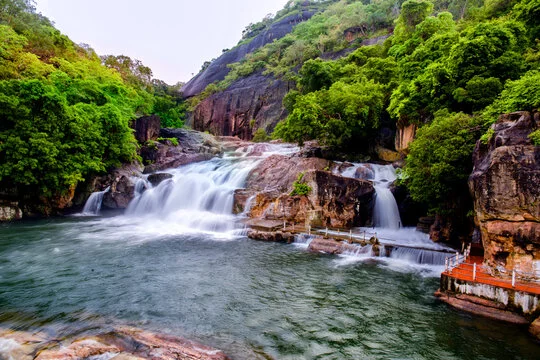




Tirunelveli District, located in the southern part of Tamil Nadu, serves as a key administrative center and a region rich in history, culture, and natural beauty. Known for its ancient temples, scenic landscapes, and educational institutions, Tirunelveli has evolved over time while preserving its cultural heritage.
Tirunelveli District is one of the oldest districts in Tamil Nadu, originally formed during British rule. It has played an essential role in the region’s historical, social, and political development. The district is surrounded by natural landmarks, with the Western Ghats on one side and the Thamirabarani River, which is vital for irrigation and agriculture, running through the district. Tirunelveli city, often referred to as “Nellai,” serves as the district’s administrative hub.
Tirunelveli District consists of several taluks, each with its unique cultural and geographical significance.
Ambasamudram: Nestled at the foothills of the Western Ghats, Ambasamudram is known for its scenic beauty and religious significance, particularly the Agasthiyar Falls and several ancient temples.
Tenkasi: A rapidly growing town, Tenkasi is famous for the Courtallam waterfalls and the Kasi Viswanathar Temple. It also serves as an important gateway to Kerala.
Palayamkottai: Often considered the “Oxford of South India,” Palayamkottai is known for its educational institutions. The town has a long tradition of Christian missionary activity, reflected in the presence of several colleges and schools.
Tirunelveli District is home to numerous ancient temples, with the Nellaiappar Temple being one of the most famous. Dedicated to Lord Shiva, the temple is an architectural marvel and an important pilgrimage site. Other notable temples include the Sankaranarayanan Temple in Sankarankovil and the Vanamamalai Perumal Temple in Nanguneri.
The district also celebrates various festivals like Panguni Uthiram and the vibrant Courtallam season, attracting visitors for religious and recreational purposes.
Tirunelveli’s landscape is diverse, with lush paddy fields, the Thamirabarani River, and a range of flora and fauna. The district boasts nature reserves like the Kalakkad Mundanthurai Tiger Reserve (KMTR), which is a significant ecological hotspot and a haven for wildlife enthusiasts. The Western Ghats region contributes to the district’s biodiversity and natural beauty, making it a key area for eco-tourism.
Tirunelveli is a crucial agricultural hub, with rice, bananas, and sugarcane being the district's primary crops. The region’s fertile soil, nourished by the Thamirabarani River, has earned it a reputation as one of Tamil Nadu’s agricultural heartlands. Additionally, the district has a growing industrial sector, including textile and cement industries.
The district is well-known for its educational institutions, particularly in Palayamkottai, which has been a center of learning for decades. The development of infrastructure, including roads, railways, and civic amenities, has contributed to Tirunelveli’s status as a growing center for education and commerce.
Tirunelveli’s combination of historical significance, cultural richness, and natural beauty continues to attract tourists and residents alike. The district's growth is fueled by a blend of tradition and modern development, making it a unique and dynamic region in Tamil Nadu.